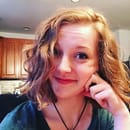The University of Pittsburgh has a long history of advancing the sciences. It’s a tradition that new students join in every year. As we move into finals week and everyone is in the need of a mood booster, we thought another round of inspiring ladies would do the trick. Shout out to all the science, technology, engineering, and math majors – this one’s for you!
Virginia Apgar
Even as a young child, Virginia Apgar couldn’t stand still. An excellent student in the sciences, she entered Mount Holyoke College in 1925, where she majored in zoology, played on seven sports teams, wrote for the college newspaper, acted in plays and played violin in the school orchestra. She trained at Columbia University Medical center to be a nurse anesthetist, eventually working at Bellevue Hospital in New York City. In this role, she began to invest more time mastering maternal anesthesia – the then-popular practice of putting pregnant women completely to sleep during labor.
Apgar quickly mastered this and began to invest more time in perfecting the practice. She created her namesake “Apgar Score,” designed to quickly evaluate the all-around health of newborn babies. The Apgar Score became the standard of care in hospitals around the United States, and it is still used in maternity wards today. She is also one of the foundation members of the March of Dimes, an organization dedicated to improving the health of mothers and babies. Apgar never retired and worked for gender equality alongside her doctoring. She often said “women are liberated from the time they leave the womb.”
Learn More: Missed in History Class, March of Dimes
Vera Rubin
This ground-breaking astrophysicist recently passed away at the age of 88 and has received renewed attention for her work since. Passionate about the stars and planets from the age of 10, Rubin was not intending to make a splash. She earned her PhD at the age of 23 and was the first woman allowed to observe at the Caltech’s Observatory. In the 1960s and 70s, Rubin was working at the Carnegie Institution to study spiral galaxies when she realized certain stars didn’t fit with the way the universe should move. The answer was Dark Matter, something that had been guessed at in the 1930s but was never confirmed. Vera Rubin did the work to finally prove its existence.
She was elected to the National Academy of Sciences and was awarded the National Medal of Science; she continually pushed for better science literacy and for women to be admitted into scientific organizations and institutions. She wrote: “We all need permission to do science, but, for reasons that are deeply ingrained in history, this permission is more often given to men than women.” Vera Rubin died the day after Christmas 2016. The president of the Carnegie Institute, where she did the bulk of her work, said she was a “national treasure.”
Learn More: NPR
Annie Jump-Cannon
Another queen of modern astronomy – Annie Jump Cannon loved the stars from an early age and had memorized the entire map of the night sky by the time she was a teenager. Despite growing up in the late 1800s, her parents saw how much she loved learning and decided to send her to college. After undergrad, she received a few marriage proposals but turned them all down to purse a graduate degree in astronomy. And she did this all while deaf – a childhood illness had taken her hearing. After graduate school, Annie was hired for an all-female group of computers at Harvard, led by Edward Pickering (yes, “computer” used to be a job title and Dr. Pickering would exclusively hire women for the rest of his career. He hired his own maid to prove that she was more hardworking and accurate than his male computers).
Annie Jump Cannon is best known for revising the possible star categories (because the originals didn’t work) and then proceeding to classify upwards of 350,000 individual stars by sight alone. Her system – the OBAFGKM System – became the scientific standard and is still a crucial point in modern astronomy. Throughout her life, Annie would work for the women’s suffrage movement, give numerous talks and fight for female astronomers to be considered legitimate scientists – not mystic horoscope readers. She would never retire, and she died at the age of 76.
Learn More: Rejected Princesses, Smithsonian, Stuff Mom Never Told You
Sophie Blanchard
Meet the “Official Aeronaut of the Restoration,” Madame Blanchard. Sophie Blanchard was a pioneer in aeronautics – also known as the science of people figuring out how to fly – and became one of the first women to solo pilot a balloon in France, if not in history. Not much is known about Sophie before her marriage to Jean-Pierre Blanchard, the world’s first professional balloonist. She was known to be scared of everything except flying. Ballooning was popular entertainment in the early 1800s, and the Blanchards were among the most popular. They routinely performed together, and Sophie would begin to perform alone, following her husband’s death in an accident.
She continued to perform, conduct experiments on parachuting, altitude’s effect on animals and the first hydrogen-powered balloon. There was even a stretch of time where Sophie and another woman, Elisa Garnerin, competed to be the best hot-air balloonist in Europe. Napoleon Bonaparte was reportedly a major fan, as was all of the French Monarchy after it was restored to power. Blanchard died in 1819 in a flight accident in Paris – her balloon caught on fire, and in her attempt to safely land, she crashed into a roof before falling to the street below. She is remember as a French national heroine, and is a feature character in many books since her death.
Learn More: Smithsonian, Stuff You Missed in History Class
Emmy Noether
Amalie “Emmy” Noether was a revolutionary teacher, accomplished linguist, and the most important mathematician you’ve never heard of. Born into a family of German mathematicians, Emmy didn’t originally choose to study in the same field. She spent most of her school years studying different languages and learning the skills a young woman would have to know at the time. At 18, she began auditing classes at the same university her older brother attended where her father taught mathematics. Being a woman, the university wouldn’t permit Emmy to formally take classes, but she was allowed to sit in on the classroom. After two years, the administration allowed her to test into the mathematics degree – she passed with flying colors and became the second woman to earn a degree in math from the school. She began to teach school, working solo until her father required her assistance with his own career. She was published her own papers on obscure algebra by the start of World War I.
Following the war, Emmy was offered a position teaching at the University of Gottingen. She earned a large following of students because she was charismatic and treated her students like family. Reportedly she was a very fast teacher, moving through several topics in one lecture. Many of her students – as well as the current University faculty – credit her with teaching students how to teach themselves. At the rise of World War II, Noether and her family members were forced to leave Germany because of their Jewish ancestry. She opted to go to the United States, where she taught at Bryn Mawr College in Pennsylvania until her death in 1935.
Learn More: The New York Times


